It is at a delicate moment in Mitsubishi's existence that we know the renewed Eclipse Cross PHEV — originally released in 2017 and now substantially revitalized, with the launch of the unprecedented plug-in hybrid version standing out.
The Japanese brand even announced, not so long ago, its exit from the European market (motivated by several years of poor global results and by the reorganization of the Renault-Nissan-Mitsubishi Alliance), a decision that was however reversed by those responsible.
Now, Mitsubishi's recovery is once again passing through Europe, largely due to the “fault” of Luca de Meo, executive director of the Renault Group since the middle of last year, who agreed to produce two models for Mitsubishi based on Renault at its European plants, not only by lowering R&D costs, as by making more use of the installed productive capacity of the Franco-Japanese alliance in Europe.

But that doesn't guarantee the future of this Eclipse Cross, because there is a possibility that the models with Japanese technical base will effectively leave the scene from 2023, which is when the first Mitsubishi with French “accent” arrive. A likely scenario is to sell less than 15,000 units/year in Europe as happened in the troubled last year.
Rear was what changed the most
The Eclipse Cross arrived in 2017, derived from the Outlander platform (and taking its name from a compact coupe Mitsubishi made between 1989 and 2012), but it never made a big impact in Europe, with annual sales that didn't go beyond 27,000 units (in 2019), having dropped to less than half in Europe by 2020—Outlander and Space Star sell much more.
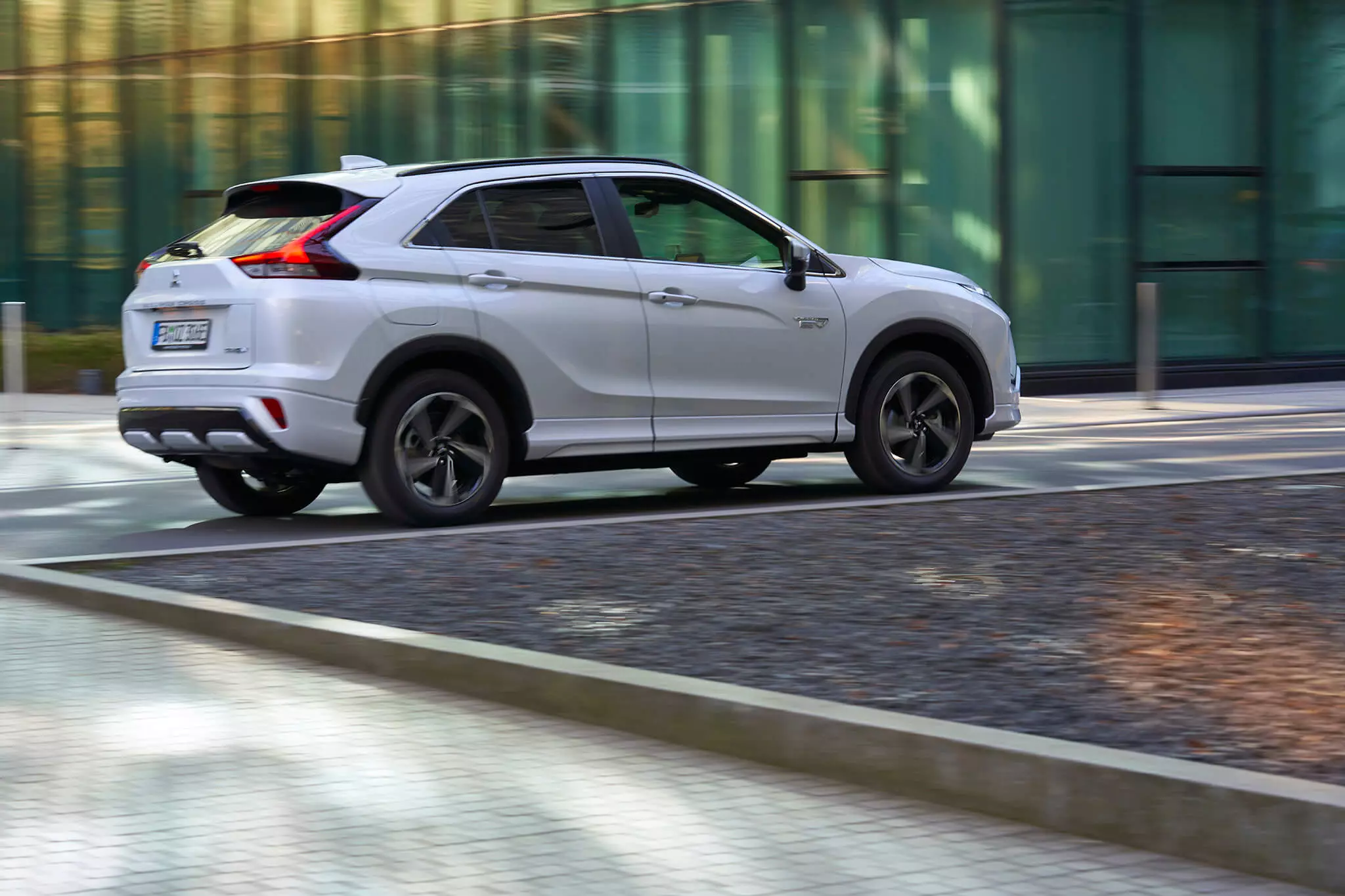
In this renewed generation, the Mitsubishi Eclipse Cross PHEV shows new bumpers, redesigned light groups (sharp, with reinforced boomerang shapes and in a lower position, with the daytime running lights and “turners” in a higher position) and abdicates the controversial split rear window that did not please when the original model was launched.
The rest of the exterior design maintains the widened wheel arches and a rising waistline, in addition to not having registered any variation in width or height. The length, yes, grew no less than 14 cm, although the wheelbase remained at 2.67 m, which means that only the ends of the car were stretched.
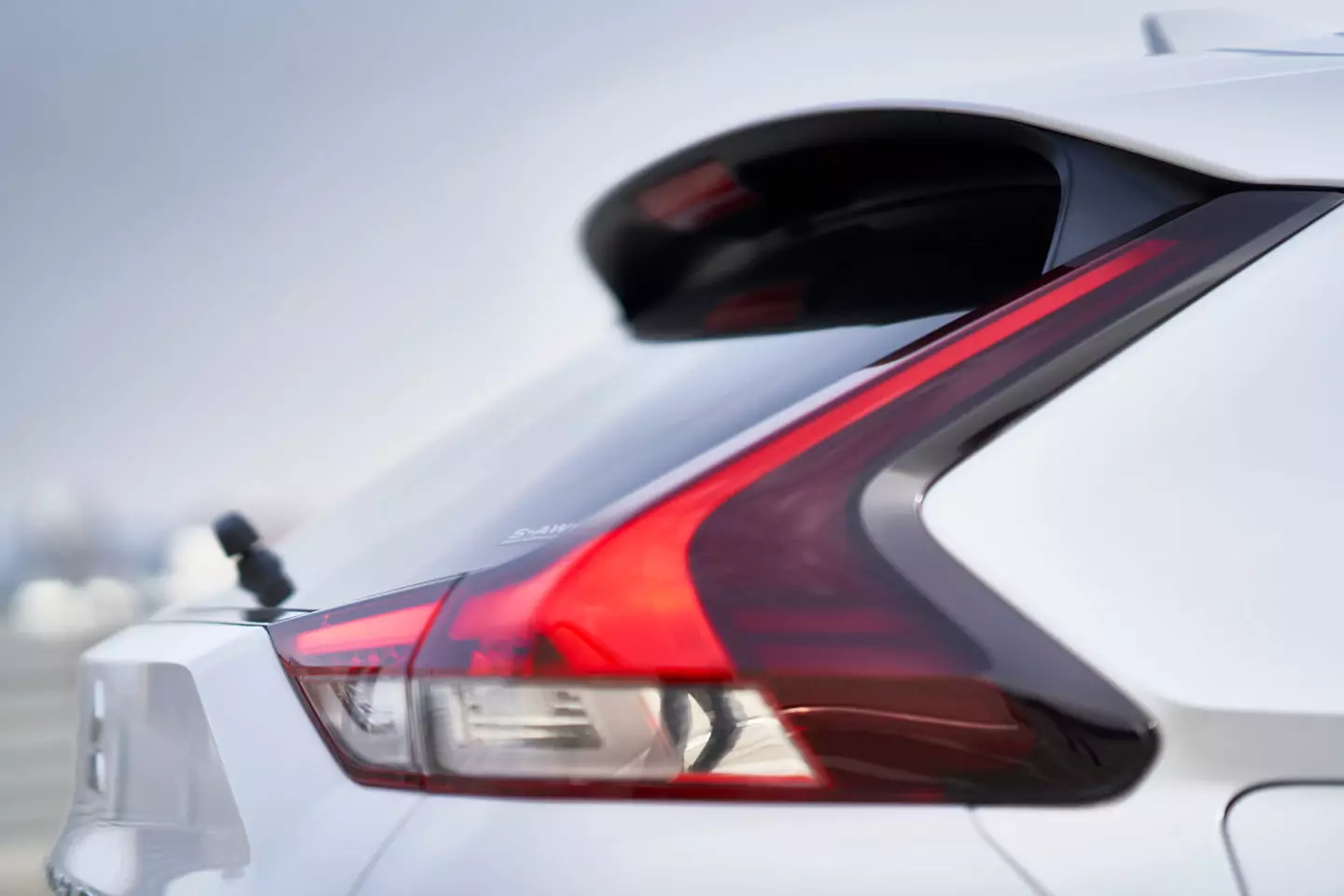
Especially the rear, in no less than 10 cm, which was important so that the volume of the Eclipse Cross PHEV's luggage compartment was not too affected by the components of the plug-in hybrid system (such as the inverter and the rear electric motor).
Tape measure in hand
The Eclipse Cross PHEV's luggage capacity of 359 liters cannot be compared to its predecessor's because it had a second row of seats that advanced and retracted longitudinally by 20 cm (so the volume of the trunk oscillated between 341 l and 448 l) and now the seats are fixed—again, because of the placement of the hybrid system components.
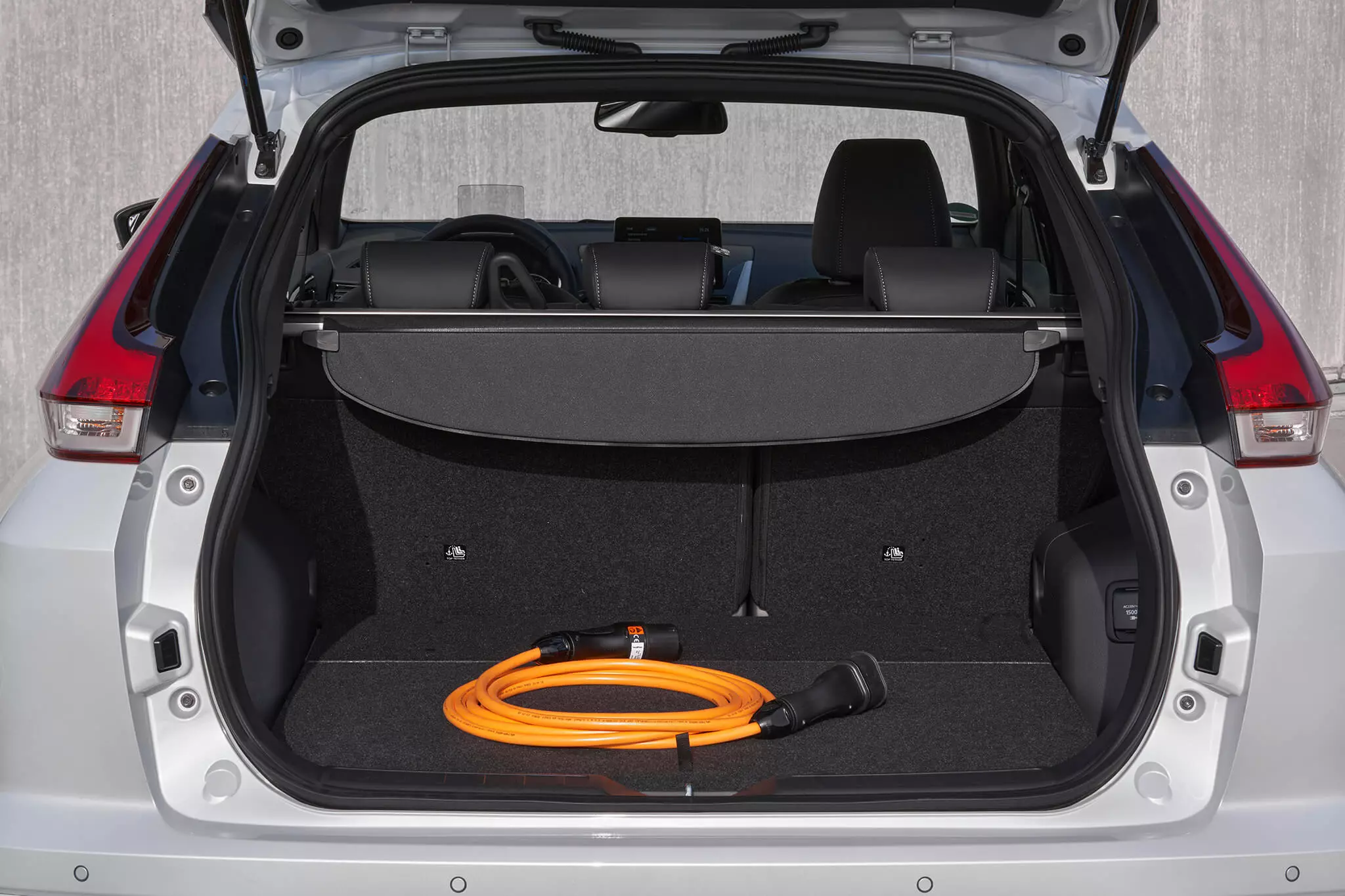
But it can be compared to rival plug-in hybrid SUVs — which also see their trunks compromised by the electrical part of their powertrain — like the Opel Grandland X, Citroen C5 Aircross, Ford Kuga or even the CUPRA Formentor to let us know that the Eclipse Cross PHEV has the second smallest suitcase of all, surpassing only the Spanish model.
Of course, it is possible to fold down the rear seat backs to increase the load volume (in asymmetrical parts) up to 1108 liters, but there is always a slight rise in the seat back area, when laid down. The shelf is flexible with a reel, less robust and watertight (to sight and touch) than rigid ones.
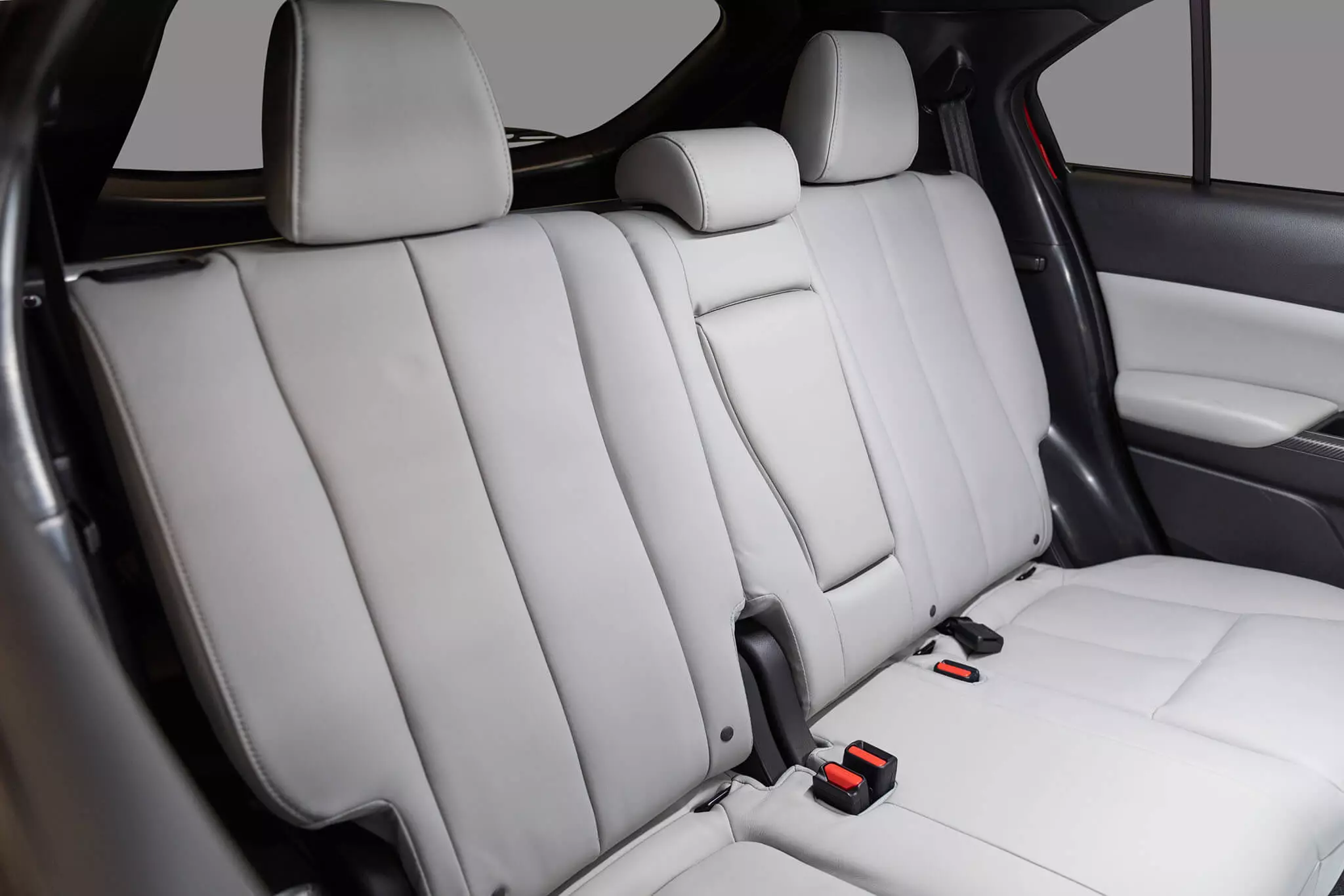
Legroom in the second row is reasonable, but not too large. The almost non-existence of a center elevation on the second row floor is pleasing (something that many rivals, even those with the highest pedigree cannot boast about), whose seats are much higher than the front, allowing rear passengers to have an unobstructed view while traveling.
On the contrary, the rear visibility for the driver leaves a lot to be desired, not only for this factor, but also because the tailgate has less extension of glazed surface.
Regarding the dimensions of the renewed Eclipse Cross and the Outlander, it causes, at first, some strangeness that the two models have the same wheelbase, height, width and even weight, but let's not forget that, under the bodywork, they share pretty much everything.
But now that the successor of the Outlander (which will only be on the market next year) has been revealed, it is clear that the new generation of the SUV grows exponentially, mainly in width (more 6 cm) and between axles (more 3.5 cm).
Changes also inside
Inside we have several visible changes, for example, in the larger central touchscreen (8”) which integrates two physical rotating buttons (it loses the unintuitive touchpad to control the infotainment of its predecessor).
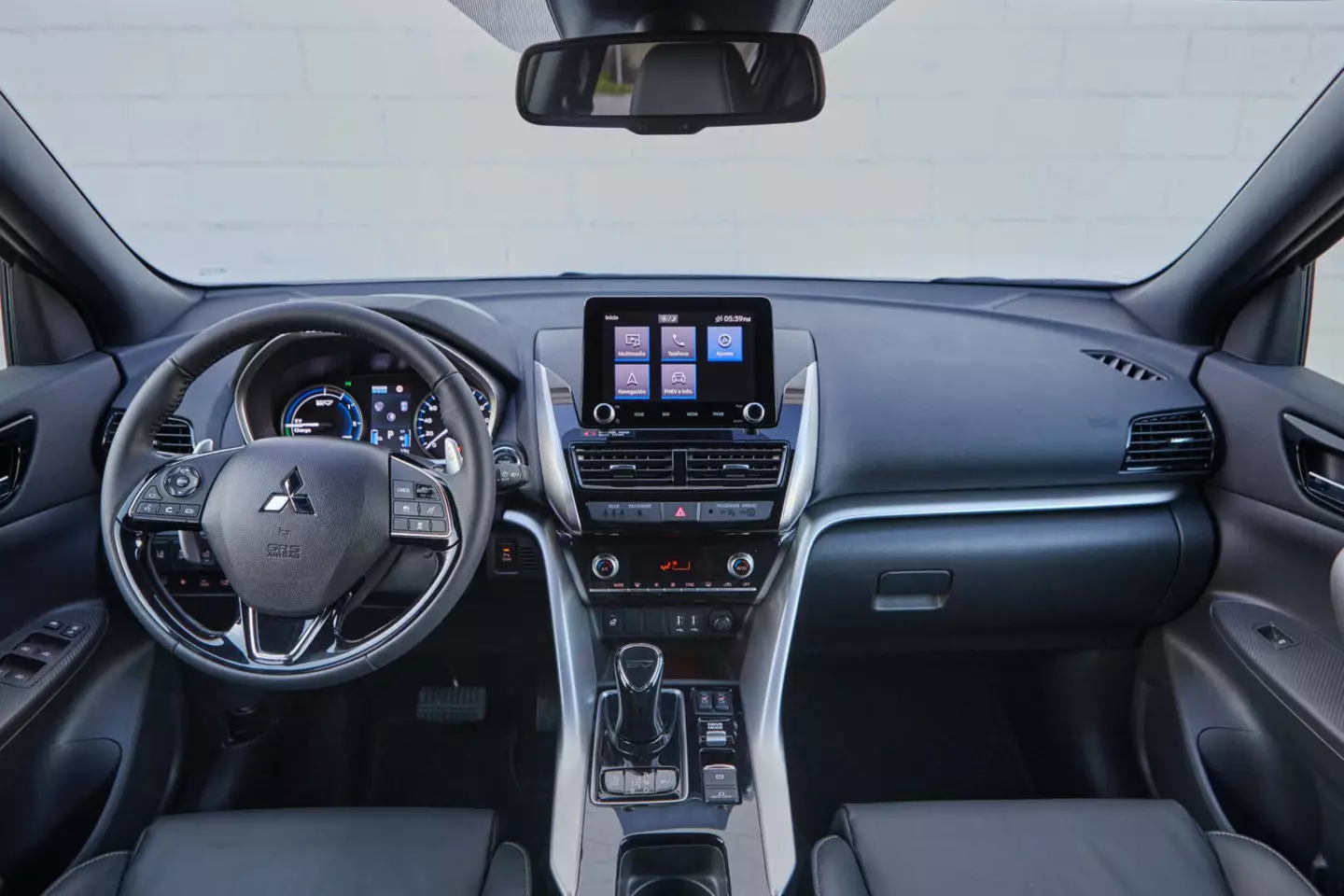
The instrumentation is mixed (analog at the extremes and digital at the center) and shows more modern graphics, with the rev counter giving way to an energy meter that sets the pointer according to the driving mode, and when the combustion engine is running. indicates the power being generated by it (kW). There is still a head-up display per slide above the instrumentation.
The overall quality is of a good standard, with lots of soft-touch surfaces and a visually pleasing combination of black backgrounds with metallic inserts.
3 engines, 4 drive wheels
The propulsion system is well known from the Outlander PHEV, using an atmospheric, four-cylinder, 2.4 l atmospheric block (Atkinson cycle), here with just 98 hp, which is supported by an electric motor, also mounted on the front axle, of 60 kW (82 hp) and a second electric motor on the rear axle of 70 kW (95 hp), which means that we are behind the wheel of a 4×4, even though there is no transmission shaft connecting the front and rear wheels. .
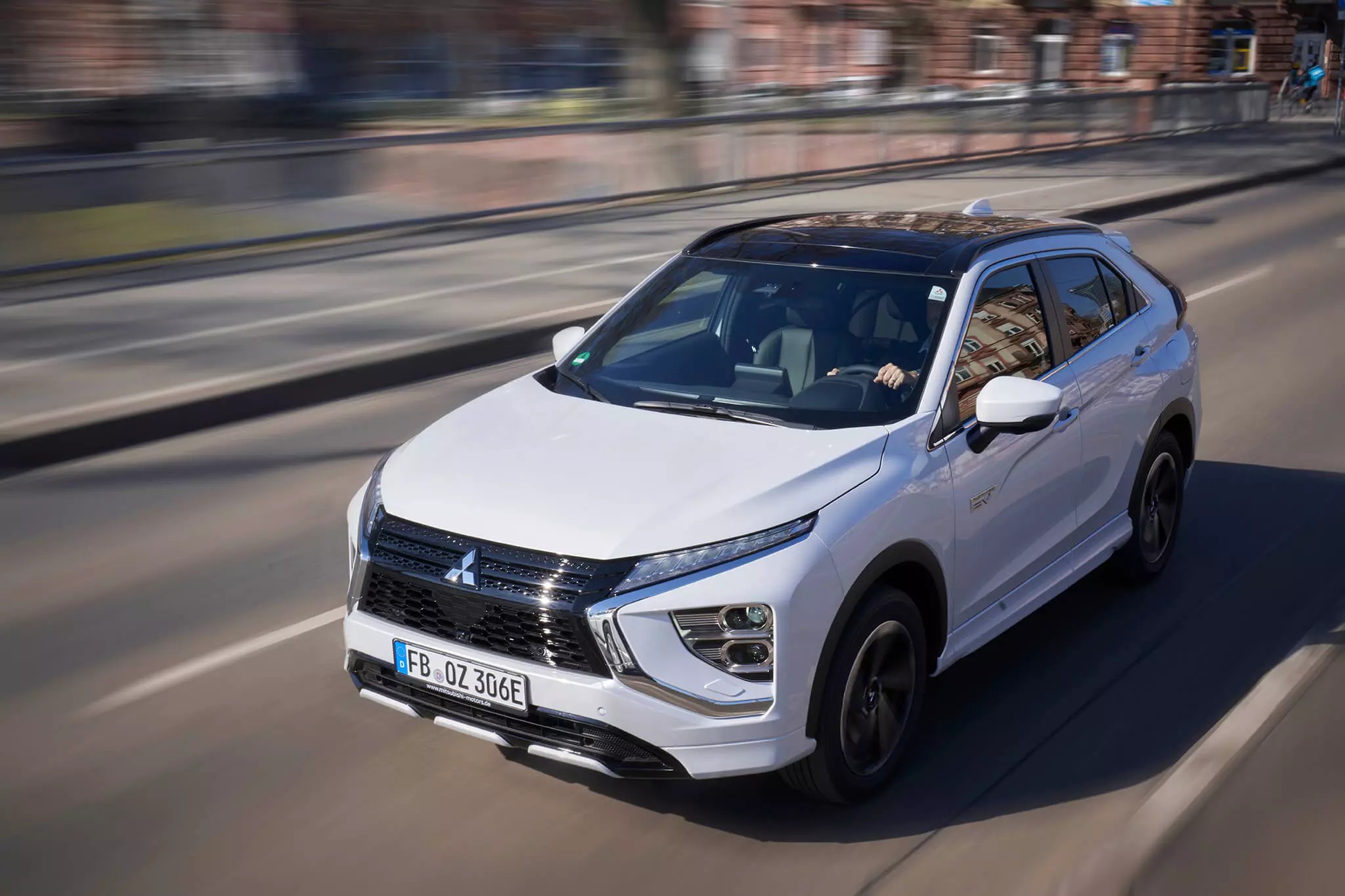
The two electric motors are powered by a 13.8 kWh lithium-ion battery (mounted under the car's floor, between the two axles) that can be fully charged in six hours in a household outlet, in four hours in a Wallbox ( the Eclipse's on-board charger is 3.7kW) or just 25 minutes on direct current (DC, at 22kW) to pass from 0 to 80% charge.
Gained a few "kilograms"
With a maximum system output of 188 hp, the Eclipse Cross PHEV turns out to be, curiously, slower than the 163 hp 1.5 turbo it replaced.
Much of the blame stems from the fact that the car has “gained” no less than almost half a ton (!) compared to the predecessor of two-wheel drive and 350 kg (!) of the four-wheel drive — 1500 kg and 1635 kg, respectively, against the 1985 kg of the new Eclipse Cross PHEV. This is what happens when we add (above all) a high-voltage battery, two electric motors, an inverter, and a much larger motor (2.4 l versus 1.5 l).
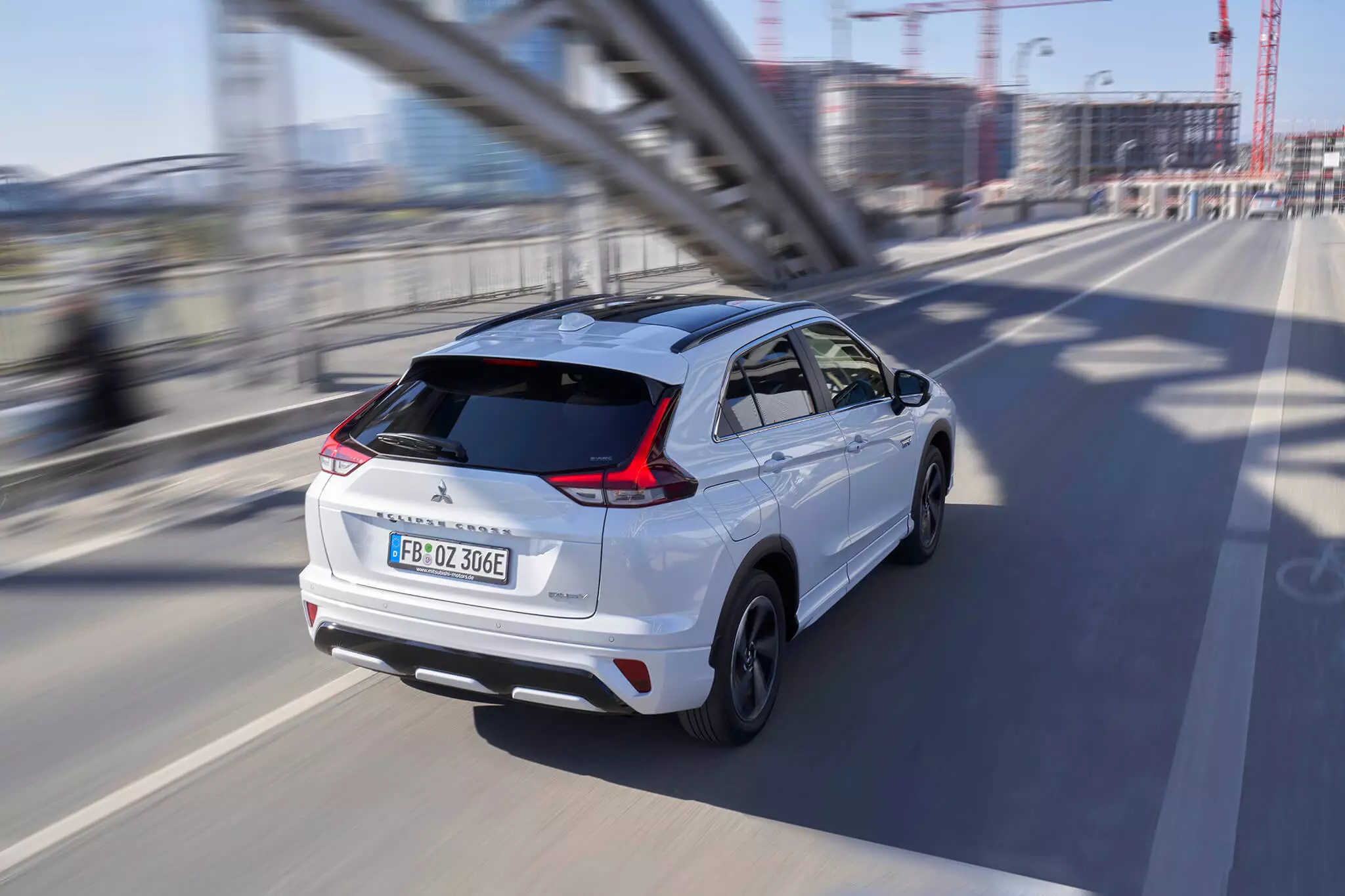
The resulting unfavorable weight/power ratio (around 10 kg/hp) does not allow for miracles. All the tuning (maximum of 4000 rpm) and concept (Atkinson cycle) of the gasoline engine has energy efficiency and not acceleration and speed recovery as a priority (although in the latter case the immediate response of the electric motors helps to compose the result ).
let's go to numbers
If we compare with the previous Eclipse Cross 1.5 Turbo (2WD), the acceleration from 0 to 100 km/h worsens from 9.7s to 10.9s, in the same way that the top speed drops from 205 km/h to 162 km/h . Compared to the new 1.5 Turbo (which will not be sold in Portugal), the disadvantage is smaller (half a second from 0 to 100 km/h) because the increase in size of the SUV has increased its mass by 100 kg.
More relevant will be the fact that the new Mitsubishi Eclipse Cross PHEV is slower than the aforementioned plug-in hybrid SUVs in its class and that its top speed is more in line with that of a 100% electric SUV (by the way, the electric maximum speed is 135 km/h). On the other hand, it's one of the rare proposals at this level and price to bring all-wheel drive — the other is the Jeep Compass 4xe.
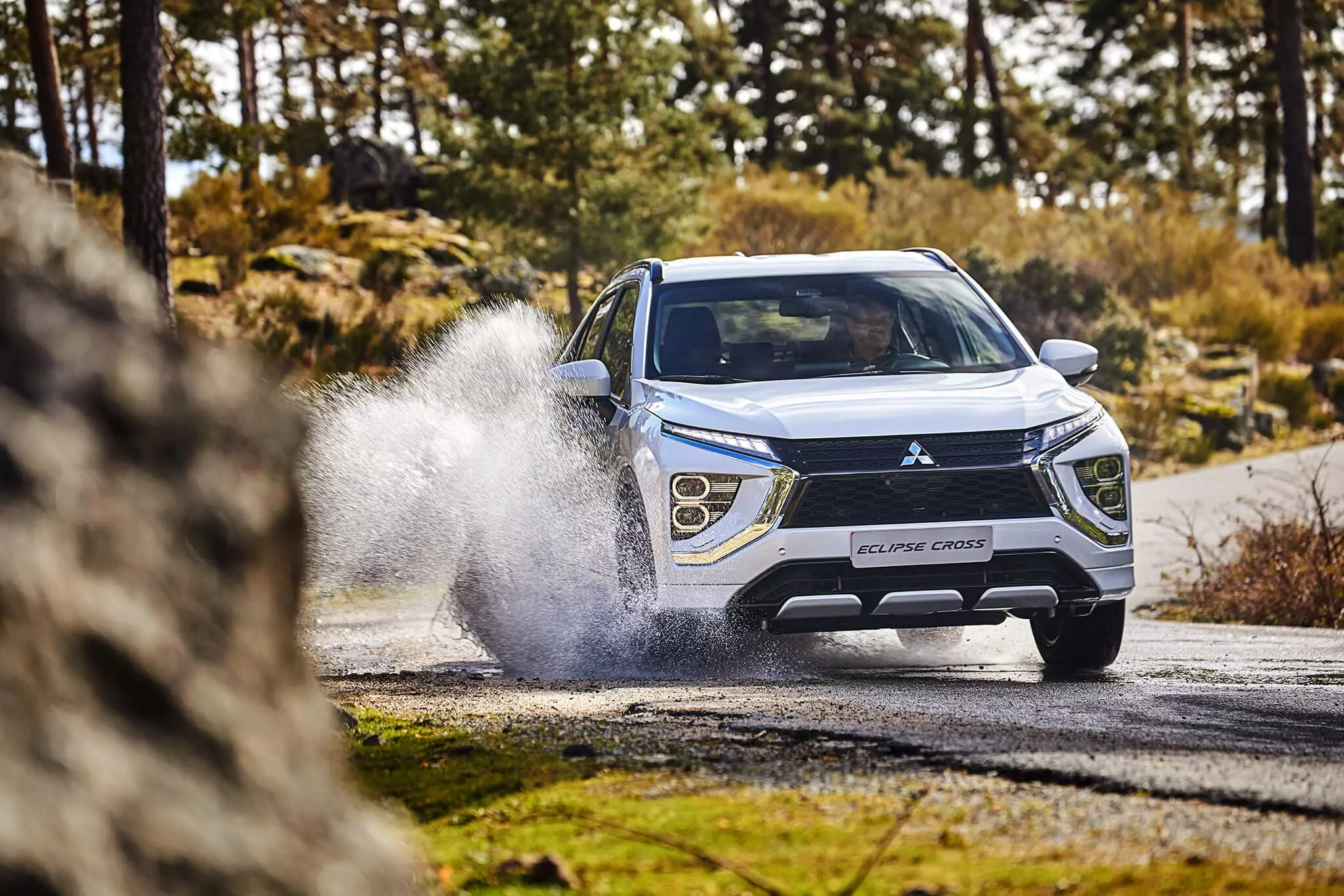
The other side of the coin is the announced average consumption of 2.0 l/100 km, but only if there is battery charge for locomotion and electrical assistance and even so with a “light” right foot, because the lack of efficiency causes step deeper and more often, which will forcibly increase the use of gasoline (and electricity, actually) and also make the journey less relaxed (the engine becomes noisy at high loads).
Eclipse Cross PHEV, a “different” plug-in
Many will not remember that this was the first plug-in hybrid system to appear on the market because the principle is similar to the Outlander PHEV, launched in 2014, and which became No. 1 in this sub-segment in Europe.
One of the most unique aspects of this plug-in hybrid is its operating strategy, which is very different from that of competitors, as here there is no gearbox and the gasoline engine only has the reduction gear and a multi-disc clutch to turn on and off. turn off the propulsion.
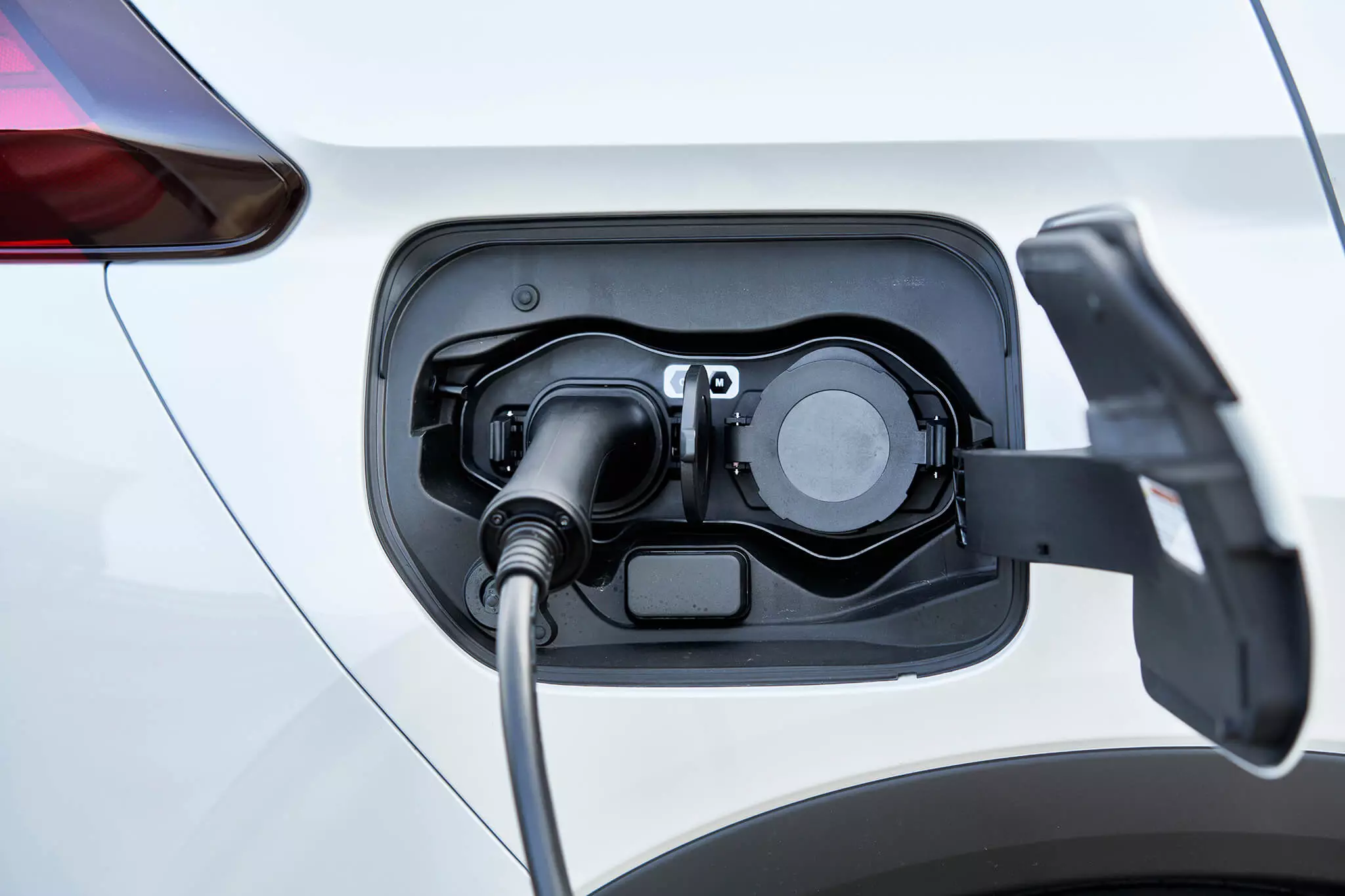
In addition to its function as a generator, the 2.4 l four-cylinder only moves the wheels in support of the two electric motors and only above 65 km/h, which means that below this speed the Eclipse Cross PHEV is 100 % electric (meaning that in a city it will rarely stop being so).
The probability that some urban users will walk weeks on end just “on batteries” (provided they charge them) is so real that the system automatically starts the gasoline engine after 89 consecutive days of 100% electric driving to clean the fuel system. injection. On the other hand, having only “one speed” works like a high gear, a “6th gear” so to speak.
There are three driving programs managed automatically by the operating system: o Electric (EV) in which the two electric motors act alone (maximum power of 177 hp, maximum speed of 135 km/h) with energy coming from the battery; The serial hybrid in which the two electric motors also make the wheels move, but in which the combustion engine, as a generator, charges the battery (maximum speed of 135 km/h); it's the parallel hybrid , just above 135 km/h, in which the combustion engine joins the front electric motor to move the front wheels, while the rear electric motor does the same with the rear ones.
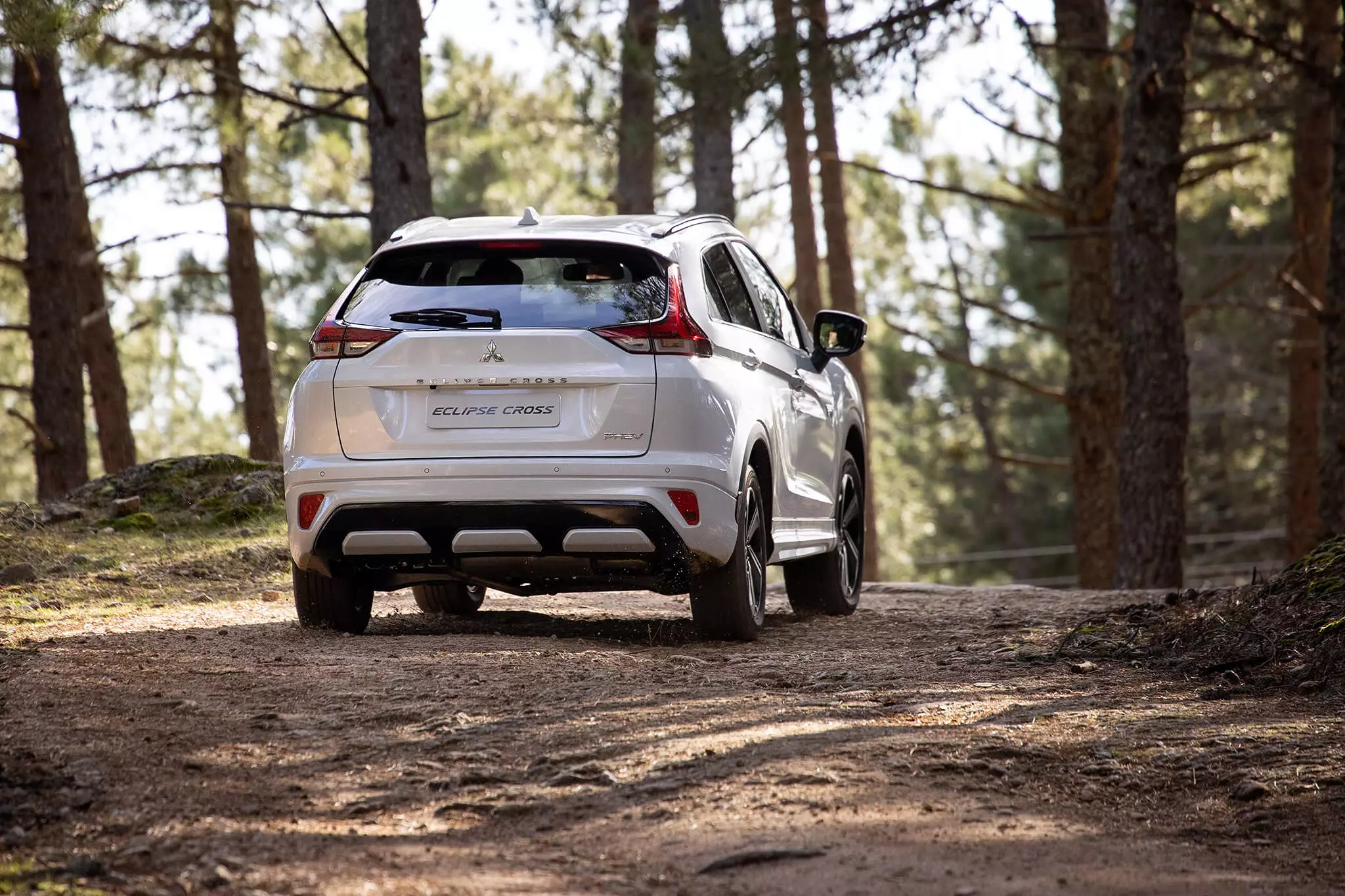
The driver can influence propulsion and energy management by selecting EV mode (provided the batteries have enough charge), activating Save mode (to reserve battery charge for a specific part of the journey) or Charge (to use the engine gasoline to charge the battery) and also use the paddles behind the steering wheel to regulate (in six levels) the intensity of the energy recovery in deceleration.
As usual, the lowest recovery mode does not cause any reduction in speed (it's as if the car were in freewheeling) and the strongest mode allows you to drive with a single pedal (without even using the brake).
The driver should bear in mind that when the battery has a very low level of charge, the engine's response becomes quite anemic, there is even a graph of blue bars that decrease from four to zero as the battery charge drops by 25% to 20%, so that this substantial reduction in performance does not catch you off guard, which could be dangerous in the middle of overtaking.
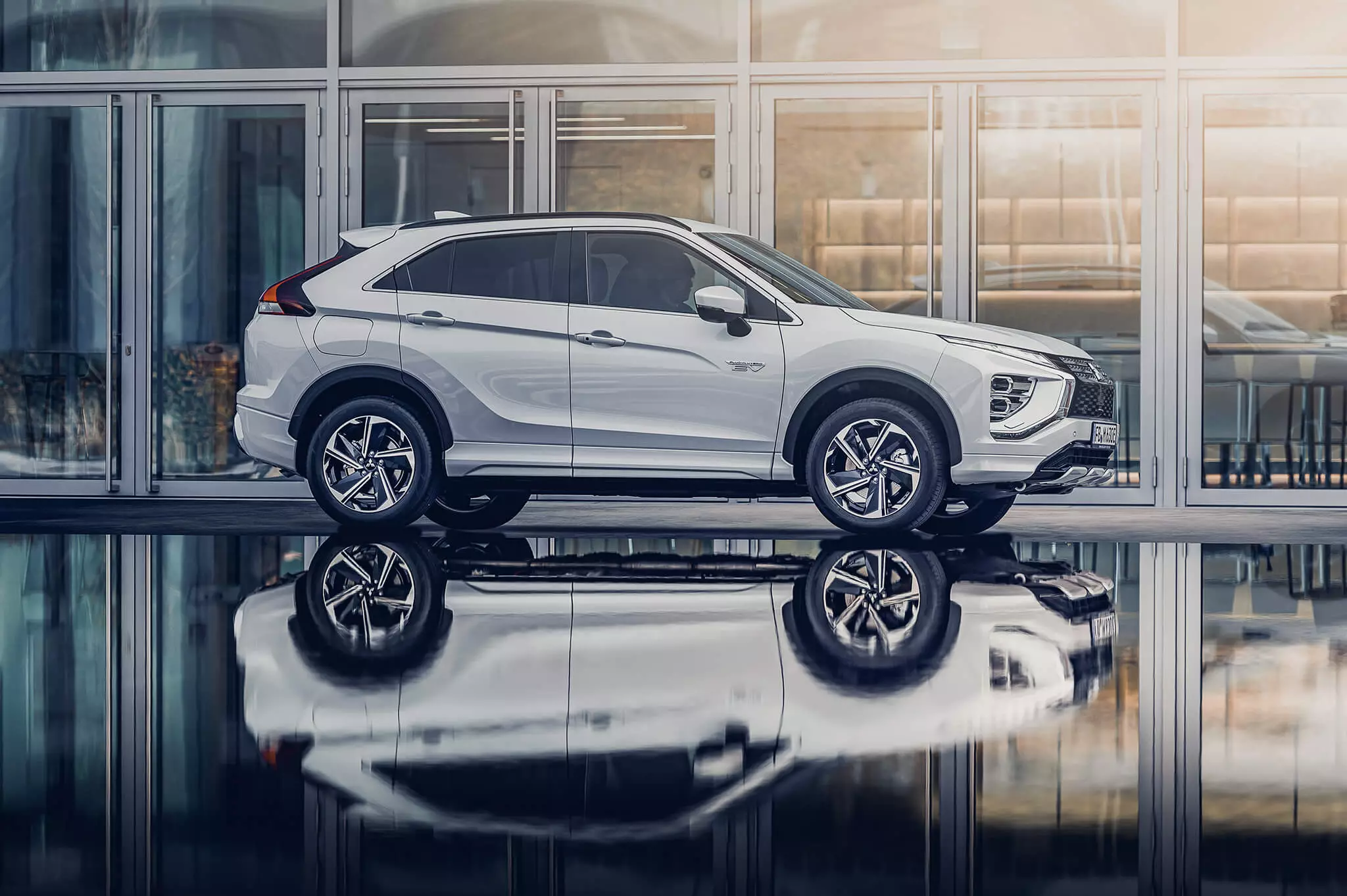
for quiet travels
Regarding the quality of the bearing itself, on secondary and winding roads the stability of the Eclipse Cross PHEV is of a good level, also because of the slightly higher ground height (it went from 18.3 cm to 19.1 cm essentially because the wheels are of larger dimension) is offset by such additional mass, located closer to the ground, which makes the car feel more “planted” on the asphalt (the center of gravity is 3 cm lower than in the gasoline version and 1 cm more lower than the Outlander), with firm cushioning but without compromising comfort.
The very light and “vague” steering goes hand in hand with a general set-up that doesn't make the driver feel too involved in his mission, while the braking fulfills, also helped by the calm rhythms that tend to occur in any trip aboard the Eclipse Cross PHEV.
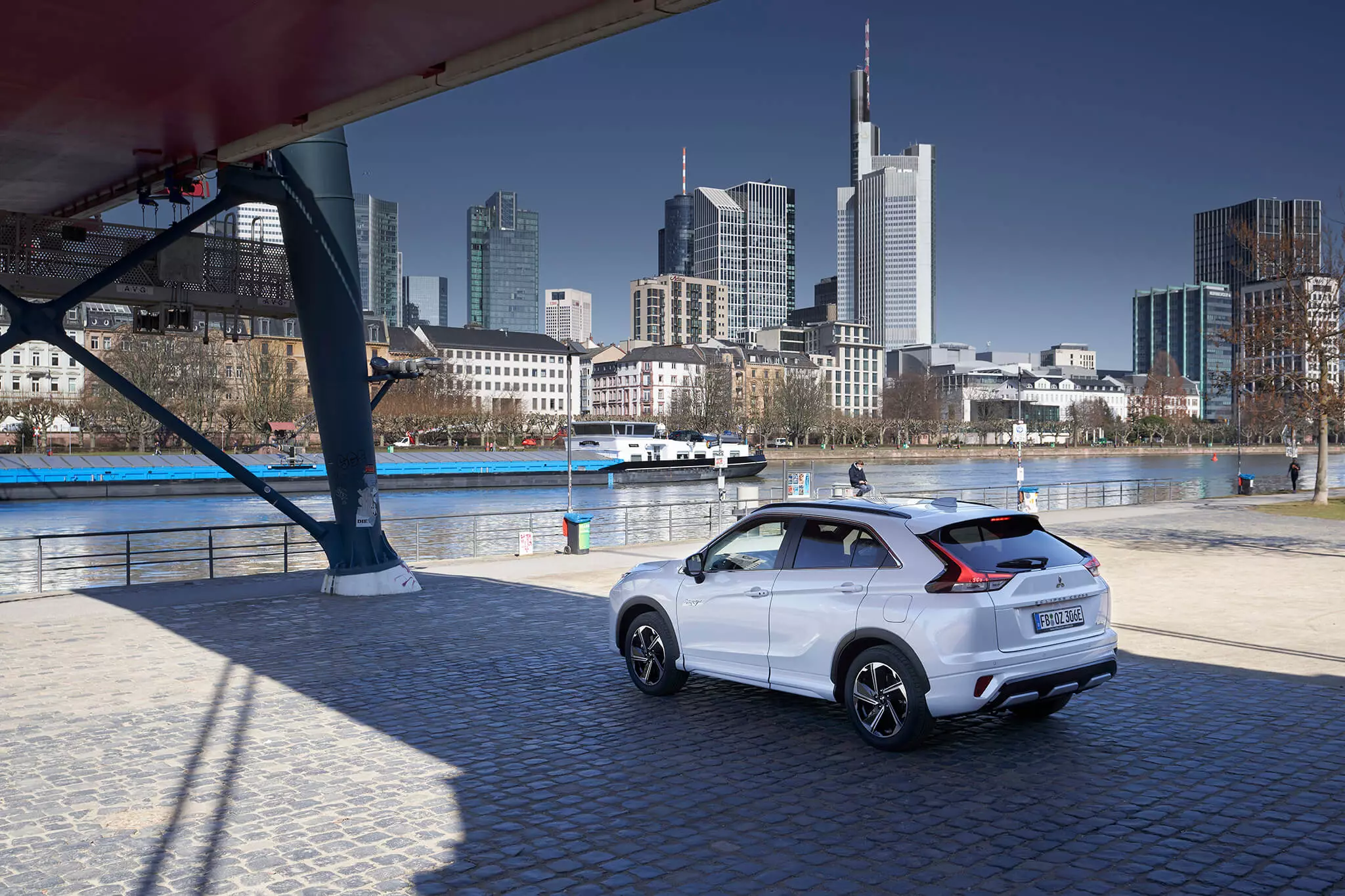
The four-wheel drive varies constantly and automatically between the front and rear wheels, being 45%-55% in stable progress at cruising speeds and reaching close to 100%-0 and 0-100% depending on the type of driving, floor conditions, driving mode, etc. In this regard, it should be noted that there are five modes: Eco, Normal, Asphalt, Gravel and Snow.
Technical specifications
| Mitsubishi Eclipse Cross PHEV | |
|---|---|
| Combustion Engine | |
| Architecture | 4 cylinders in line |
| Positioning | front cross |
| Capacity | 2360 cm3 |
| Distribution | DOHC, 4 valves/cil., 16 valves |
| Food | Injury indirect |
| power | 98 hp at 4000 rpm |
| Binary | 193 Nm at 2500 rpm |
| Electric Motor (front) | |
| power | 60 kW (82 hp) |
| Binary | 137 Nm |
| Electric Motor (rear) | |
| power | 70 kW (95 hp) |
| Binary | 195 nm |
| Maximum Combined Yield | |
| Maximum Combined Power | 188 hp |
| Maximum Combined Binary | N.D. |
| Drums | |
| Chemistry | lithium ions |
| Capacity | 13.8 kWh |
| charge power | Alternating current (AC): 3.7 kW; Direct current (DC): 22 kW. |
| Loading | 230V: 6h; 3.7 kW: 4h; 0-80% (DC): 25 min. |
| Streaming | |
| Traction | on 4 wheels |
| Gear box | Gearbox (1 speed) |
| Chassis | |
| Suspension | FR: Independent MacPherson; TR: Multiarm Independent |
| brakes | FR: Ventilated discs; TR: Solid disks |
| Direction / Turns behind the wheel | Electrical assistance/2.9 |
| Dimensions and Capabilities | |
| Comp. x Width x Alt. | 4.545 m x 1.805 m x 1.685 m |
| Between axles | 2,670 m |
| trunk | 359-1108 l |
| Deposit | 43 l |
| Weight | 1985 kg |
| Tires | 225/55 R18 |
| Installments, Consumptions, Emissions | |
| Maximum speed | 162 km/h (135 km/h in electric mode) |
| 0-100 km/h | 10.9s |
| electrical autonomy | Combined: 45 km; Urban: 55 km |
| mixed consumption | 2.0 l/100 km; 19.3 kWh/100 km |
| CO2 emissions | 46 g/km |
